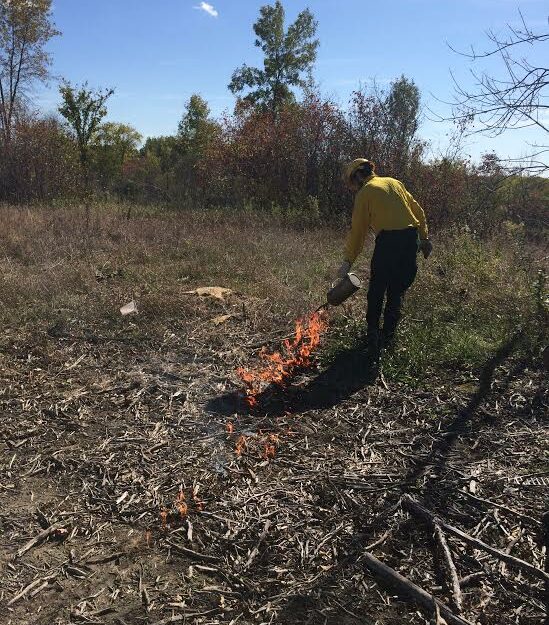Cleaning up the mess


By: Angela Mohar
While common and glossy buckthorn both are significant sources of our troubles in wooded areas, they are not the only players out there. Exotic honeysuckle species, Oriental bittersweet, autumn olive, and even some tree species are out there wreaking havoc on our wooded areas by out-competing native tree and shrub species. Years ago when experts realized what was happening and put a stop to transporting and selling buckthorn, for example, one of their first questions was probably “where do we begin?” The next question was probably “how?” Even though today’s eradication methods have come a long way from where they were, they’re still not perfect. At least we know what we can do, learn how we can improve, or just find out what doesn’t work.

The first step is knowing where and what sort of invasive species are out there. There are more than 20 parks, recreation areas, and trails owned and/or operated by the Three Rivers Park District that cover over 27,000 acres. Other than what you can see immediately from a trail, it’s difficult to know what else is within the remote, hidden woodlots without venturing in there to see what’s there. Using GIS tools, we can walk through and collect data and locations of different invasive species, their size, and abundance. From there we can “grade” the woodlot. These grades can give those in charge of managing woodlots an idea of what areas would require the most or least work to eradicate invasive species and which might be so far gone to put off our efforts until the higher quality woodlots are under control.
During this term we’ve used a variety of different control methods. The method used all depends on what we’re up against. For smaller seedlings, foliar spraying can be used; for larger stuff, cut-and-treat is better. However, not all invasive species can be taken care of in this way. Black locust, for example, senses when it’s “under attack” and will send all of its energy to the roots so clones can be created (Mother Nature sure created some smart plants!).
Some situations allow for the Fecon to go through, tear up everything that isn’t a desirable tree, and ready the area for burning to get rid of a seed bank. This can be either for just management of invasive species or for other purposes. We recently did this for a future seedling planting site. With the seed banks of undesirable species gone, the seedlings planted there in the future will have a better chance of survival.
Even though invasive species make forest management much more difficult, I believe that there is hope for the future. Just last week I volunteered at a buckthorn removal event where numerous young children came with their parents to help out. They were very eager to rid the woods of buckthorn (which was actually quite entertaining). It goes to show that so long as there are people who care about a cause, hope is not lost.